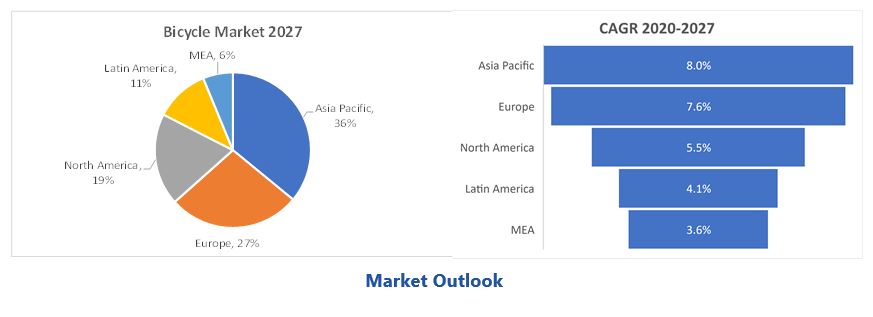

Cycling is growing in popularity for a number of reasons, ranging from the benefits to health and the environment to more pleasurable and cost-effective journeys. Many people began or returned to cycling during the COVID-19 pandemic, which led to shortages in the supply side of bicycles, parts, and components.
In contrast to the many makes of bicycles available in the market, the manufacture of frames and associated parts is dominated by a few large OEMs. They generally supply various bicycle brands in addition to selling their own brand directly. These days the manufacturing facilities are state-of-the-art and make full use of automation, robotics, simulation, computerized design, and testing.
Designers are continually looking to tempt us with the latest innovations to make their brand the most desirable. This guarantees that the bicycle industry will grow significantly for the foreseeable future. e-Bikes (electric) are a growth area, opening up cycling to a new group of participants.
This Insight should be interesting to machine builders and software developers as the potential for new innovations will only increase the need for automation and robotics plus design, simulation, and testing software.
There are several unverified dates of when the “bicycle” was invented, but here we will limit the history to the type of bicycle we recognize today:
Frames were constructed of strong steel and alloy steel, being continually improved to increase strength, rigidity, lightness, and durability.
New generation of more versatile alloy steels, which could be welded mechanically. This increased the availability of light and inexpensive frames.
Lightweight aluminum frames became the popular choice.
Advances in technology led to the use of even lighter and stronger frames made of composites of structural fibers, such as carbon.
These days most manufacturers offer frames and components made from aluminum, carbon fiber, titanium, and steel. More exotic materials include wood (mainly ash), bamboo, or magnesium. Each material has its advantages and disadvantages, with steel being very durable and highly resistant to fatigue, but heavier and more expensive to mass produce. Modern steel or aluminum “tubes” vary in their thickness across the frame to balance the negative effect of certain material, so that aluminum gets more flexible, and steel gets lighter.
Aluminum is relatively light, stiff, and affordable but fatigues more quickly over time and is trickier to repair. Aluminum frames are often combined with carbon forks or seat posts to allow more flexibility and riding comfort.
Titanium shares many of the properties of steel but with greater resistance to fatigue and corrosion, it has a high strength to weight ratio and is easier to repair than aluminum or carbon fiber. But as the material is relatively rare and labor intensive to work with, it is a more expensive option.
Carbon fiber’s primary advantage is that at a given stiffness it is significantly lighter than steel, aluminum, or titanium. It is made from composite carbon sheets bonded together in a mold using resin. It can be formed into complex
shapes enabling maximum aerodynamic efficiency of the frame. However, as carbon fiber is very rigid and cannot be flexed or bent, fissures and cracks in the structure occur over time. Also, currently, the price is higher than aluminum and steel due to the increased budget spent on research and development.
It is estimated that there are around 1 billion bikes in the world today (compared to 1.5 billion cars), with approximately 364,000 being produced daily. The production numbers for bicycles are 2.5 times higher than for cars.
In 2020 the market was estimated to be over $54 billion with Asia Pacific holding the highest market share. With a worldwide CAGR of around 7 percent, growing much faster than the global automotive market, the market in 2027 is expected to be over $86 billion. Asia Pacific has the highest CAGR with Europe expected to witness significant growth over the forecast period.

Although we are all familiar with the various popular and famous brands of bikes, the majority of these do not manufacture their own frames and components. China, India, EU, Taiwan, and Japan are responsible for 87 percent of global production.
The major bike companies do their own engineering and design and then contract a manufacturer to manufacture the product based on their specifications. Ninety-seven percent of frames assembled in Europe use frame manufacturers outside of Europe. The top four manufacturers accounted for less than 45 percent of the market revenue share in 2020.
ARC Advisory Group clients can view the complete report at ARC Client Portal
If you would like to buy this report or obtain information about how to become a client, please Contact Us
Keywords: Bicycles, Automation, Robotics, Simulation, Machine Tools, Battery Manufacturing, ARC Advisory Group.

